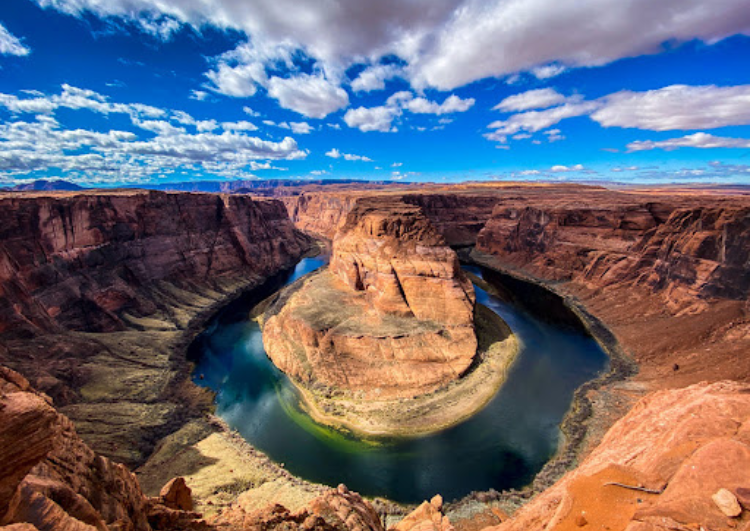
Canyon de Chelly National Monument is located in northeastern Arizona, in the United States. It is situated within the boundaries of the Navajo Nation and encompasses several canyons, including Canyon de Chelly and Canyon del Muerto. The nearest town to the monument is Chinle, Arizona.


Canyon de Chelly National Monument was established in 1931 by President Herbert Hoover through an executive order. However, the area has been home to various indigenous communities, including the Navajo people, for thousands of years before its designation as a national monument.

Canyon de Chelly was not "invented" by anyone. It is a natural geological formation that has been shaped over millions of years by erosion from water and wind. The indigenous Navajo people have lived in and around Canyon de Chelly for centuries, long before it was designated as a national monument. The monument was established by the U.S. government to protect and preserve the area's natural and cultural resources.


The name "Canyon de Chelly" is derived from the Navajo word "Tsegi," which translates to "rock canyon" or "canyon within a canyon." The name reflects the unique geological features of the area, characterized by deep sandstone canyons carved by streams over millions of years.
The designation as a "National Monument" indicates its protected status by the U.S. government to preserve its natural and cultural significance. Canyon de Chelly National Monument encompasses not only stunning geological formations but also rich cultural heritage, including ancient ruins and rock art left by the Ancestral Puebloan people and the Navajo who continue to inhabit the region.




Canyon de Chelly National Monument offers fantastic opportunities for hiking enthusiasts due to its stunning natural beauty, diverse landscapes, and rich cultural history. Here are some reasons why it's a great destination for hiking lovers:
Scenic Trails: The monument features several hiking trails that offer breathtaking views of the canyons, rock formations, and ancient ruins. Trails range from easy to laborious, catering to hikers of all skill levels.
Cultural Experience: Hiking in Canyon de Chelly allows visitors to immerse themselves in the area's rich cultural heritage. Along the trails, you can see ancient rock art, ruins of ancient dwellings, and learn about the history and traditions of the Navajo people who have lived in the region for generations.
Varied Terrain: The hiking trails in Canyon de Chelly traverse a variety of terrains, including canyon bottoms, sandy washes, and steep cliffs. This diversity offers hikers a unique and rewarding experience as they explore the different ecosystems within the monument.
Wildlife Viewing: The monument is home to a variety of wildlife species, including birds of prey, deer, and smaller mammals. Hikers may have the opportunity to observe wildlife in their natural habitat while exploring the trails.
Guided Tours: For those interested in learning more about the area's history and natural features, guided hiking tours are available. Knowledgeable guides can provide insights into the geology, ecology, and cultural significance of Canyon de Chelly.
Overall, Canyon de Chelly National Monument offers a memorable hiking experience that combines natural beauty, cultural exploration, and physical challenge, making it an ideal destination for hiking lovers.






Canyon de Chelly National Monument can be hiked year-round, but the best time to visit depends on your preferences and the activities you're interested in. Here's a breakdown of the different seasons and what they offer for hiking:
Spring (March to May): Spring is a popular time to visit Canyon de Chelly, as the weather is generally mild and comfortable for hiking. Wildflowers bloom during this time, adding bursts of color to the landscape. However, spring can also bring occasional rain showers, so it's a good idea to check the weather forecast before heading out on the trails.
Summer (June to August): Summer can be hot in Canyon de Chelly, with temperatures often reaching into the 90sĀ°F (30sĀ°C) or higher. Early morning or late afternoon hikes are recommended to avoid the heat of the day. Additionally, summer is the monsoon season in this region, so be prepared for afternoon thunderstorms, which can cause flash floods in the canyons.
Fall (September to November): Fall is another popular time to visit, with cooler temperatures and clear skies making for pleasant hiking conditions. The foliage begins to change colors in the canyons, creating a beautiful backdrop for outdoor activities.
Winter (December to February): Winter can be cold in Canyon de Chelly, with temperatures often dropping below freezing at night. Snowfall is possible, especially at higher elevations, which can make hiking more challenging. However, the winter landscape can be quite striking, and the crowds are generally smaller during this time, offering a more peaceful hiking experience.
Regardless of the season, it's essential to come prepared with plenty of water, sunscreen, and appropriate clothing and footwear for hiking. Always check trail conditions and weather forecasts before embarking on any hikes to ensure a safe and enjoyable experience.